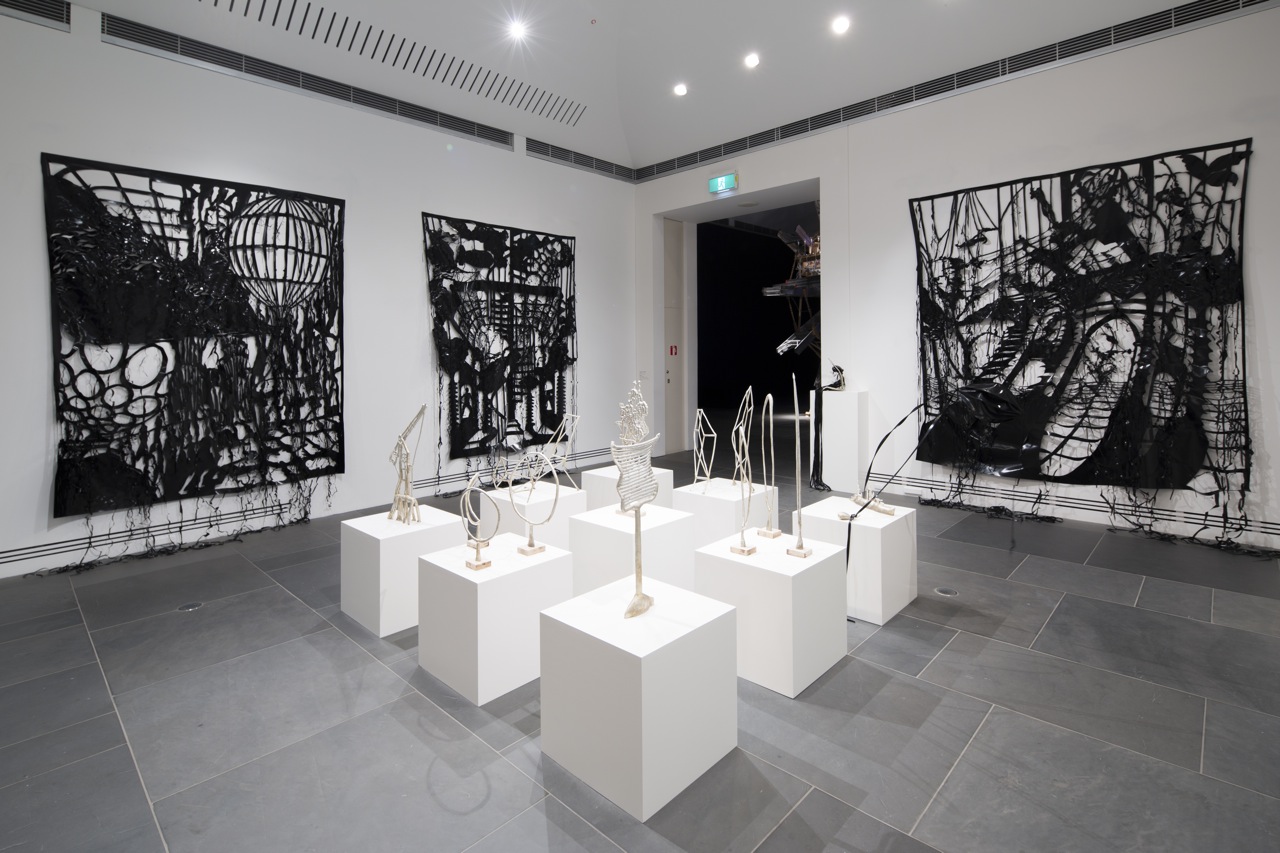Climatic at Dark Heart, Adelaide Biennial
by Lisa Slade
The daughter of an industrial chemist, Caroline Rothwell is no stranger to the idea that human agency can alter our environment. Her body of work, comprised of paintings and sculptures made for the Adelaide Biennial, pivots around current ideas regarding geoengineering – the science of manipulating the earth’s climate in order to cease global warming. Geoengineering employs the logic that climatic balance can be achieved if humanity can exert actions back on nature that are similarly scaled to those exerted by nature. Medievalism meets Einstein’s theory of relativity.
Human interference in the climate is not a contemporary phenomenon – our belief in our capacity to shape our environment is an abiding human trait. And it is this hubris, with all of its Shakespearean shades, that propels the works of Caroline Rothwell. In the table-top sculpture Climate Machine Rothwell brings together two materials – stable and structural PVC and Britannia metal (Rothwell must feel a certain attachment to this metal, given that both she and the metal element are British). PVC, a general purpose plastic, is lauded for its stability, durability and relative safety, while Britannia metal is an alloy with a silvery sheen comprised of tin, antimony and copper. For more than a decade Rothwell has been experimenting with the sculptural properties and potential of alloys – a process that began with a bronze alloy being poured into household linen held over a domestic bathtub.
Climate Machine references devices, such as cloud seeding machines that are created to generate precipitation, used most famously during the Beijing Olympics to stave off rain during the opening ceremony. …colonisation of the climate (imagine a fleet of ships seeding clouds over the earth’s oceans)
Rothwell has also used PVC to create a series of painterly, neo-Baroque sculptures (the material is a relative of the synthetic polymer that comprises most acrylic paint). The plasticized skins hang in a manner akin to trophied animal pelts, fluid and weighty they simulate a corpus….but one of the laboratory rather than the wilderness. Each painting’s Baroque detail is rendered by hundreds of cuts performing a type of eye foolery or trompe l’oeil….In Breathe a smoke stack, of the Victorian age, spews forth a firmament of lacerated plastic….
Each work is scalpel cut by hand from one piece of rectangular PVC. The process of cutting into the surface but retaining all of the incised material so that it cascades down the front of the image animates the surface – making it sculptural and fluid. The rectangle format gives a painterly reference along with the monochrome which links the piece to woodcuts from the middle-ages where line, light and dark define objects and space.
The imagery is gathered from my personal archive of photographs, news clippings, historical references to make a subject that includes slumping architecture, technological climate devices, weeds, dissolving distances, clouds, art historical snippets….
The imagery is a baroque collision of slumping buildings, technological climate devices, weeds, dissolving distances, clouds, art historical snippets.
Lisa Slade, November 2013
